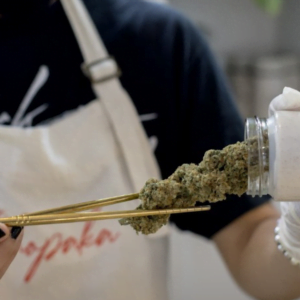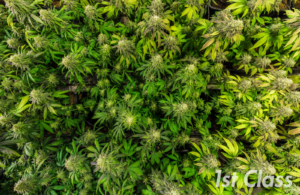What is Cannabis?
Cannabis also known as marijuana or weed, is a versatile plant with a rich history of human use for various purposes. From ancient civilizations to modern times, cannabis has been utilized for medicinal, spiritual, industrial, and recreational reasons. This article provides a comprehensive overview of cannabis, covering its botany, historical significance, chemical composition, medicinal applications, recreational use, industrial potential, legal status, and potential risks and benefits, supported by references to reputable studies and sources.

Botany and Species of Cannabis
Cannabis is a member of the Cannabaceae family and includes three main species: Sativa, Indica, and Ruderalis.
- Sativa : This species is known for its tall stature, narrow leaves, and longer flowering cycles. Sativa strains are often associated with uplifting and energizing effects, making them popular for daytime use.
- Indica : Indica strains are characterized by their shorter, bushier stature, broader leaves, and shorter flowering cycles. They are commonly linked to relaxation and sedation, making them preferred for evening or nighttime use.
- Ruderalis : Ruderalis is a less common species known for its autoflowering trait, meaning it transitions to the flowering stage based on age rather than light cycles. It is typically low in THC and other cannabinoids and is less frequently used for recreational or medicinal purposes.
Historical Uses and Cultural Significance
Cannabis has a long history of human use, dating back thousands of years. Ancient civilizations in China, India, the Middle East, and beyond utilized cannabis for medicinal, spiritual, and industrial purposes.
- Ancient China: Cannabis was used as a medicinal herb for conditions such as pain and malaria, as documented in the Pen Ts’ao Ching, a renowned Chinese herbal text from around 2737 BCE.
- Ancient India: Cannabis played a significant role in religious rituals and was used in traditional Ayurvedic medicine for various therapeutic purposes.
- Modern Times: In the 1960s and 1970s, cannabis gained popularity among counterculture movements, advocating for its decriminalization and exploring its potential benefits.
Chemical Composition and Cannabinoids
Its contains over 100 different cannabinoids, which are unique chemical compounds that interact with the body’s endocannabinoid system. The two most well-known and studied cannabinoids are delta-9-tetrahydrocannabinol (THC) and cannabidiol (CBD).
- THC: THC is the primary psychoactive compound in cannabis and is responsible for the euphoric “high” experienced by recreational users. It binds to cannabinoid receptors in the brain, affecting mood, perception, and cognition.
- CBD: Unlike THC, CBD is non-psychoactive and does not produce intoxication. It has gained attention for its potential therapeutic benefits, including anti-inflammatory, analgesic, and anxiolytic properties.
Other cannabinoids found in cannabis include cannabigerol (CBG), cannabinol (CBN), cannabichromene (CBC), and many more. Each cannabinoid may contribute to the overall effects of cannabis on the body and mind.
Medicinal Applications and Potential Benefits
Its has been used for medicinal purposes throughout history, and its therapeutic potential continues to be a subject of research and interest. Some of the potential medical applications of cannabis and cannabinoids include:
- Pain Management: Both THC and CBD have demonstrated analgesic properties and may be beneficial in managing chronic pain conditions, such as neuropathic pain and arthritis.
- Epilepsy: CBD has shown promise in reducing the frequency and severity of seizures in certain forms of epilepsy, leading to the approval of Epidiolex, a CBD-based medication, by the U.S. Food and Drug Administration (FDA).
- Nausea and Vomiting: THC has been used to alleviate nausea and vomiting in cancer patients undergoing chemotherapy and individuals with AIDS-related wasting syndrome.
- Neurological Disorders: Research suggests that cannabinoids may have neuroprotective properties and could potentially benefit individuals with neurodegenerative disorders like Alzheimer’s disease and Parkinson’s disease.
- Anxiety and Depression: CBD has been investigated for its potential anxiolytic and antidepressant effects, although further research is needed to fully understand its efficacy in treating these conditions.
Recreational Use and Effects from Cannabis
Recreational cannabis use involves the consumption of cannabis for the purpose of experiencing its psychoactive effects. When THC binds to cannabinoid receptors in the brain, it triggers the release of dopamine, leading to feelings of euphoria and relaxation.
The effects of cannabis can vary widely depending on the strain, individual tolerance, and method of consumption. Users may experience altered perception, heightened sensory experiences, increased appetite, and changes in mood.
Industrial Applications
Its has a range of industrial applications due to its strong fibers and versatile properties. Historically, it has been used to produce textiles, paper, and ropes. In recent years, there has been renewed interest in using hemp, a variety of Sativa with low THC content, for sustainable and environmentally friendly alternatives to traditional materials.
Hemp-derived products, such as hemp oil and hemp-based plastics, have gained popularity in various industries due to their potential to reduce the environmental impact and carbon footprint.
Legal Status and Regulation
The legal status of cannabis varies widely across countries and regions. Some countries have legalized cannabis for medicinal and/or recreational use, while others strictly prohibit its possession, sale, or consumption.
In the United States, the legal status of cannabis is a complex and evolving issue. As of my knowledge cutoff in September 2021, several states have legalized cannabis for medical and/or recreational use, but it remains illegal under federal law. It is essential to stay informed about the legal regulations and restrictions in your specific jurisdiction.

Potential Risks and Side Effects from Cannabis
While cannabis has potential benefits, it is not without risks, especially when used recreationally and excessively. Some of the potential risks and side effects include:
- Impaired Cognitive Function: use can impair memory, attention, and decision-making, particularly in the short term.
- Addiction and Dependence: Long-term and heavy use of cannabis can lead to the development of addiction and dependence.
- Respiratory Issues: Smoking cannabis can lead to respiratory problems, similar to smoking tobacco.
- Psychiatric Effects: In some individuals, cannabis use may exacerbate or trigger psychiatric conditions, such as anxiety and psychosis.
- Impaired Driving : use can impair motor skills and reaction times, increasing the risk of accidents when driving under the influence.
Scientific Research and Ongoing Studies
The scientific community continues to explore the potential benefits and risks of cannabis through rigorous research. Numerous studies have investigated its medical applications, mechanisms of action, and potential therapeutic effects.
A study published in JAMA Psychiatry examined the association between cannabis use and the risk of developing mood and anxiety disorders. The research found that cannabis use was associated with an increased risk of developing depression, bipolar disorder, and social anxiety disorder.
Another study published in the Journal of Clinical Medicine investigated the effects of CBD on sleep and anxiety. The researchers found that CBD improved sleep scores in participants with anxiety, highlighting its potential as a sleep aid.
Conclusion
Cannabis is a plant with a diverse history and a range of potential uses. It has been utilized for medicinal, spiritual, industrial, and recreational purposes across cultures and centuries. While cannabis and its cannabinoids have shown promise in treating certain medical conditions, there are also potential risks and side effects associated with its use. As research continues, a better understanding of cannabis and its potential benefits and risks will shape future policies and regulations surrounding this versatile plant.




